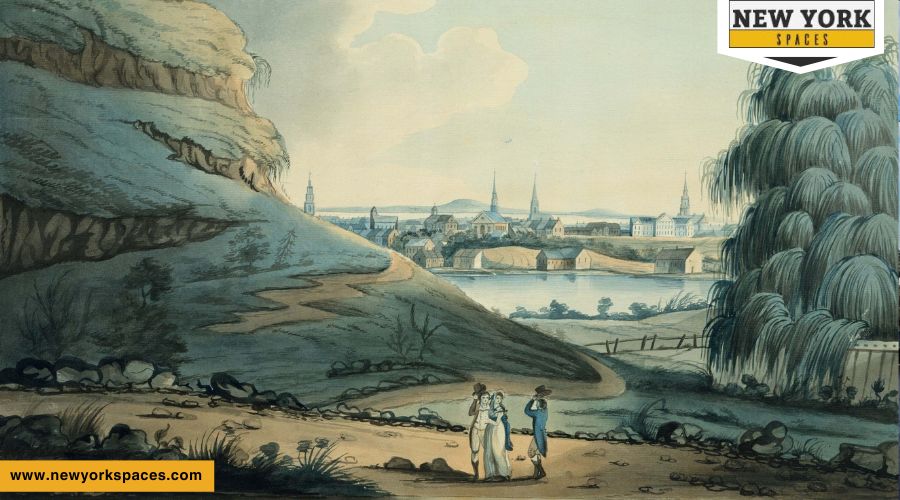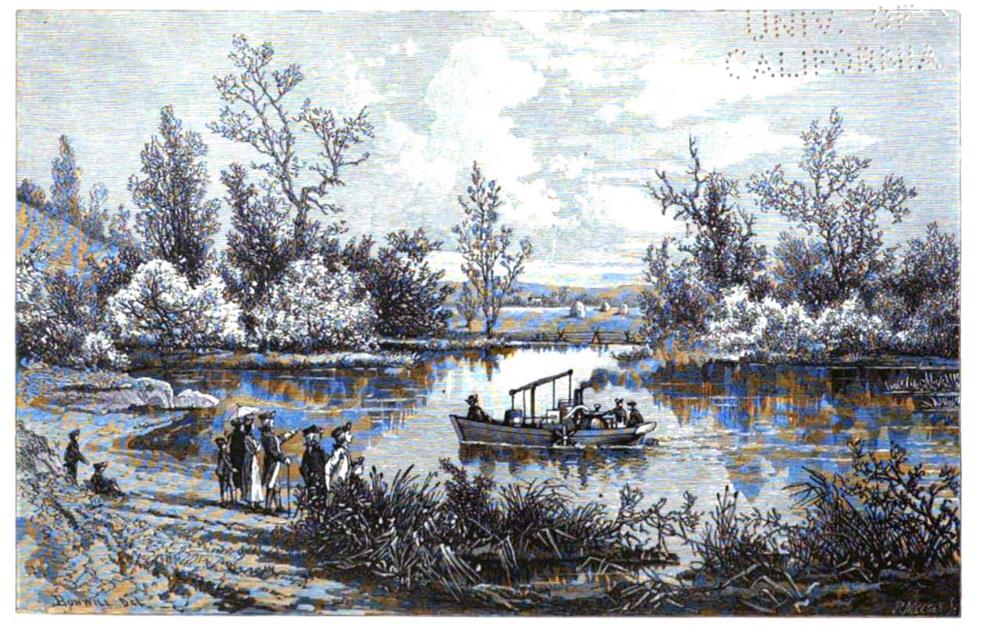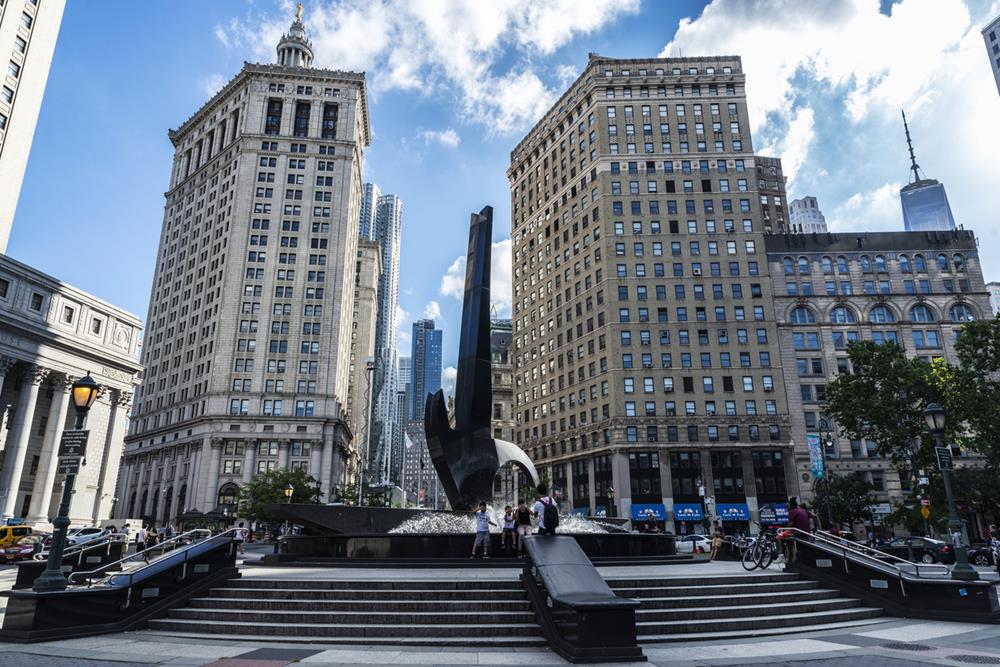New York City, a metropolis known for its towering skyscrapers and bustling streets, is also a place of hidden natural wonders. Beneath the concrete jungle lies a forgotten world of rivers and streams that once flowed freely. These lost rivers of New York City have a rich history, having shaped the city’s development subtly before being engulfed by urbanization. But what exactly happened to these hidden waterways, and why were they buried in the first place?
The Vanishing of Natural Waterways
As cities worldwide have grown and transformed, their natural landscapes have often paid the price. One of the most striking examples of this environmental change can be seen in the evolution of New York City, where the once abundant natural waterways have largely disappeared, giving way to urban development. This phenomenon underscores the complex relationship between urban growth and environmental sustainability.
Historical Context
In the 17th century, New Amsterdam, now known as New York City, was a Dutch colony teeming with natural water resources, including streams, rivers, and wetlands. These resources were indispensable to the Lenape people, the original stewards of the land, facilitating their needs for nourishment, transportation, and cleanliness. However, the arrival of European settlers initiated a profound shift in the utilization and perception of these waterways.
As New York grew, the natural landscape that was once harmonious with human existence began to be seen through a lens of utility and obstruction. This transition began a significant environmental transformation, gradually erasing the natural waterways from the city’s map and memory.
Urbanization and Its Impact
The metamorphosis of New York City’s environment was dramatic and swift, illustrating the intense impact of urbanization. The burgeoning demands of an increasing population, coupled with the relentless drive for urban expansion, necessitated land modification. Natural rivers and streams, once integral to the city’s ecosystem, were increasingly viewed as barriers to the ambitions of a modernizing society.
In pursuit of development and accommodating the pressing needs for housing and infrastructure, numerous waterways were obliterated—either filled in to create a solid ground for construction or rechanneled into the city’s burgeoning sewer system. This process of rerouting not only served the purpose of expanding usable land but also aimed at managing waste and mitigating the risks of urban flooding.
This transformation reflects a broader narrative of environmental change, where the forces of urbanization often overshadow the preservation of natural landscapes, leading to irreversible alterations in the fabric of urban ecosystems.
The Hidden Rivers Today
As New York City has evolved, many of its natural waterways have been obscured by layers of urban development, yet they continue to influence the modern cityscape in unexpected ways. This phenomenon highlights the enduring impact of historical environmental changes on contemporary urban life.
Collect Pond and the Five Points
Collect Pond, once a vital freshwater source in Lower Manhattan, epitomizes the transformation of natural landscapes in response to urbanization. By the late 18th century, pollution from the burgeoning industrial activities rendered it unusable, leading to its infilling in 1811. This area, known for the infamous Five Points slum, is today marked by street names and a modest park, serving as faint echoes of its watery past.
The obliteration of Collect Pond underscores the drastic measures taken to accommodate urban growth, often at the expense of natural resources. The park dedicated to its memory serves as a poignant reminder of the city’s lost natural heritage, inviting reflection on the environmental costs of urban expansion.
Minetta Brook
With its once-clear waters and teeming trout, the Minetta Brook is another testament to the city’s hidden hydrological history. As Greenwich Village expanded, the urban landscape engulfed the brook; its waters rerouted into the shadows of the sewer system. Yet, the brook’s legacy persists in unexpected flooding in buildings along its concealed path, a mysterious tribute to the natural watercourse that once defined the area.
This phenomenon serves as a reminder of the resilient natural forces that continue to assert themselves, challenging the city’s attempts to tame them. The story of Minetta Brook illuminates the complex interplay between natural and built environments, revealing how the past continues to surface in the present.
Tibbetts Brook
Tibbetts Brook, situated in the Bronx, New York City, once meandered through Van Cortlandt Park and Bronx Park, ultimately flowing into the Harlem River. As urbanization progressed, much of the brook was diverted underground into sewers and channels to accommodate the city’s growth and prevent flooding.
This redirection led to Tibbetts Brook being encased in concrete and hidden from view during the late 19th and early 20th centuries. Recent initiatives have aimed to restore sections of Tibbetts Brook, reintroducing natural features and enhancing water quality, demonstrating a growing commitment to revitalizing urban waterways.
Sawkill River
The Sawmill River traversed Westchester County, New York, passing through Yonkers and the Bronx, and fell victim to pollution and neglect amid industrialization and urban expansion. Subsequently, large segments of the Sawmill River were buried underground and covered with pavement, notably during the Saw Mill River Parkway construction in the mid-20th century.
Recent endeavors have sought to breathe new life into the Sawmill River, with projects focusing on uncovering portions of the river, creating green spaces, and revitalizing its surrounding environment.
Bronx River
While much of the Bronx River remains open and accessible, sections of it have been channelized and culverted, particularly in urbanized areas of the Bronx. Efforts have been made to restore and revitalize the river, including daylighting portions and creating green spaces along its banks.
Moreover, the restoration of the Bronx River has been instrumental in providing educational opportunities for schools and communities, raising awareness about the importance of preserving urban waterways. As a result, the Bronx River has become a natural oasis within the city and a symbol of environmental resilience and community activism.
Environmental and Cultural Legacy
The transformation of New York City’s landscape, particularly the vanishing of its natural waterways, offers a poignant narrative about the interplay between urban development and environmental stewardship. This legacy not only prompts a reevaluation of past decisions but also inspires a forward-looking perspective on urban ecological and cultural sustainability.
Ecological Considerations
Consequences of River Encasement: Loss of biodiversity, increased urban heat, and heightened flood risks.
Movement Towards Green Infrastructure: Initiatives to reintegrate green spaces and water management systems, aiming to replicate the ecological roles of the original waterways for urban resilience and sustainability.
Rediscovering the Lost Rivers
Interest Revival: Urban explorers, historians, and environmentalists are mapping the buried rivers, using historical data to trace their underground courses.
Sustainability and Daylighting Discussions: The rediscovery fuels debates on urban sustainability and the feasibility of reintegrating these rivers into the cityscape through daylighting projects.
The Challenge of Revival
Revising New York City’s lost rivers is fascinating and challenging. Daylighting projects have been successful in other cities, offering benefits such as improved water quality, increased green space, and enhanced urban aesthetics.
However, in New York, the sheer scale of urban development and the complexity of underground infrastructure make such projects more difficult. Despite these challenges, small-scale initiatives and community-led efforts have begun to explore the possibilities of reintegrating these natural waterways into the city’s landscape.
The Legacy of Lost Rivers
Beyond Historical Relics: New York’s hidden rivers symbolize the ongoing interaction between urban development and natural environments, offering lessons on balancing human activities with ecological preservation.
Future Directions: The narrative of these rivers advocates for incorporating nature-based solutions in urban planning, aiming for a symbiosis between development and environmental integrity.
This evolving story underscores the importance of integrating nature-based solutions into urban planning, heralding a future where development and ecological integrity go hand in hand.
The Future of Urban Waterways
The narrative of New York City’s submerged rivers is a profound reflection on the trajectory of urban development and its environmental ramifications. This history provides global insights for cities, underscoring the necessity of harmonious coexistence between urban expansion and natural ecosystems. The gradual recognition and revival of these hidden rivers symbolize a broader movement toward ecological restoration and sustainable urban planning.
Lessons Learned
The saga of New York’s hidden rivers sheds light on the critical balance between urbanization and environmental conservation. It teaches us the value of respecting and incorporating natural landscapes into the urban fabric rather than imposing on them. The initiatives to uncover and reintegrate these waterways into the city’s life underscore nature’s enduring resilience and the capacity for urban environments to regenerate and flourish.
This journey of rediscovery and renewal emphasizes the importance of learning from historical oversights to foster urban landscapes that are both vibrant and sustainable, ensuring that cities remain in harmony with their natural foundations.
Vision for Tomorrow
Looking forward, the legacy of New York City’s lost rivers presents a compelling vision for the future of urban planning. It advocates for a paradigm shift that places natural systems at the heart of urban development strategies, recognizing them as essential components of a healthy, resilient city.
Embracing green infrastructure, such as parks, green roofs, and permeable surfaces, along with the potential daylighting of historical waterways, can transform urban areas into spaces that are not only more livable but also adaptive to the challenges of climate change and urbanization. This vision imagines cities where lost rivers are reborn as vibrant public spaces, contributing to urban communities’ ecological and social well-being.
By learning from the past and innovating for the future, cities can ensure that their waterways—whether flowing openly or remembered—become integral to a sustainable urban ecosystem, enriching the lives of their inhabitants and fostering a deeper connection to the environment.
Conclusion
The lost rivers of New York City tell a story of transformation from natural landscapes to urban environments. Their disappearance under the weight of concrete and steel reflects the city’s rapid growth and changing priorities. However, the ongoing interest in these hidden waterways and the efforts to bring them back to light represent a hopeful narrative of rediscovery and reconnection with the natural world.
As New York City looks to the future, the tale of its lost rivers serves as both a cautionary tale and a source of inspiration for creating a more sustainable urban landscape. By understanding and appreciating the history of these buried rivers, we can envision a future where urban development and natural ecosystems coexist more harmoniously.
The story of New York City’s lost rivers is about what was lost and what could be regained or reimagined for a greener, more resilient city. As we delve into the past, we uncover opportunities to shape a future that honors our cultural heritage and environmental responsibilities.



